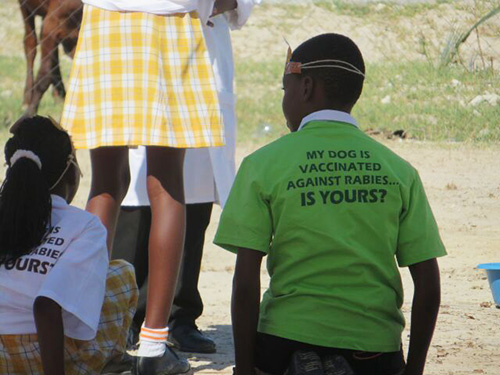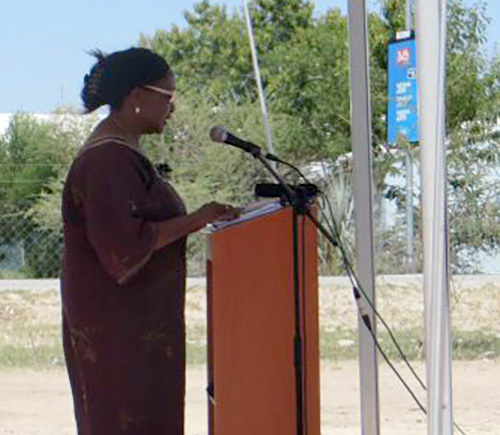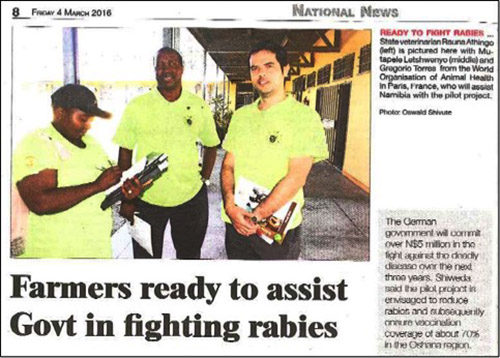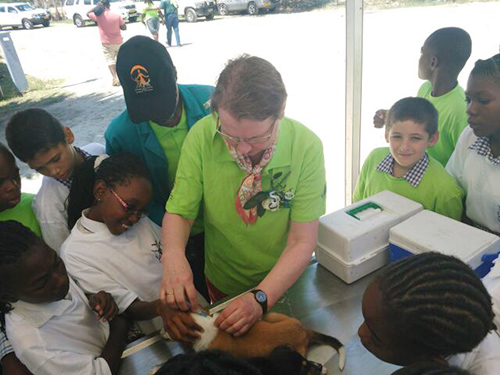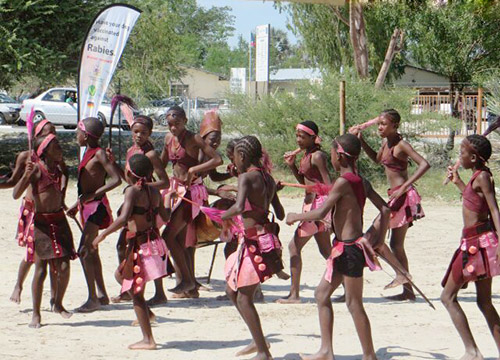Deputy Minister of Agriculture Water and Forestry, the Honourable Anna Shiweda. Picture (c) G. Torres (oie) 2016.
Rabies remains endemic in the Southern African Development Community (SADC) region. It is the second most reported disease and presents the widest territorial distribution according to the 2011 SADC Animal Health Year Book.
In March 2015, the Government of Namibia launched the National Rabies Control Strategy with the goal of eliminating human rabies deaths through effective dog rabies control. The Government of the Federal Republic of Germany expressed its interest in supporting dog rabies control in southern Africa, with Namibia being the first country to benefit from this assistance. Germany funded a three-year project through the OIE, to support Namibia in the implementation of the National Rabies Control Strategy.
The project has five overarching goals:
The Euro 300,000 project includes a sub-grant with the Friedrich-Loeffler-Institut (FLI), OIE Reference Laboratory for rabies, based in Germany. The project started in May 2015 and will be implemented in two consecutive phases i.e. the pilot phase (March 2016 to February 2017) and the roll-out phase (March 2017- March 2018).
The Project was officially launched by the Hon. Anna Shiweda (Deputy Minister of Agriculture Water and Forestry) on the 1st of March 2016 in Ondanwa (Oshana Region) in Northern Namibia. Around 200 people attended the event including regional and local authorities, several local schools, the police and other stakeholders. The event was chaired by Dr Milton Maseke (OIE Delegate and Chief Veterinary Officer of Namibia) and included speeches by Dr Karin Schwabenbauer (OIE Delegate and Chief Veterinary Officer of Germany), Dr Moetapele Letshwenyo (OIE Sub-Regional Representative for Southern Africa), Dr Babagana Ahmadu (FAO Country Representative), Dr Athingo (National Rabies Coordinator) and by a representative from the Minister of Health and Social Services of Namibia.
During the interludes, children from local schools acted-out rabies sketches, performed songs and traditional dances. The event benefited from great media coverage including national and local media. The launch was also covered in the evening news on national television.
Dr Gregorio Torres (OIE Headquarters) facilitated the preparation of a 3-year action plan for the project. Consultations included representatives from the Directorate of Veterinary Services and a wide range of stakeholders – around 50 representatives from the Ministry of Health and Social Services, farmers, farmer unions, traditional authorities, Regional Councillors and environmental health officers from Ongwendiva town council (Oshana region) were met in the consultative process.
Rabies is clearly considered a very important public health problem and a priority in the region. Their expectations and contributions to the rabies elimination efforts were extensively discussed. All stakeholders expressed their complete support to the project and their commitment to achieve the elimination of dog mediated human rabies in the region
For more information, contact Moetapele Letshwenyo
National newspaper covered the stakeholders consultation.
Top : Dr K. Schwabenbauer demonstrates dog vaccination. Bottom : Traditional dancing. All pictures (c) G. Torres (oie) 2016, except where mentioned otherwise.
